Thick, broad, hand-pulled noodles seasoned with chilli, garlic and Sichuan pepper, Xi’an Biang Biang noodles offer a delectable taste and texture.
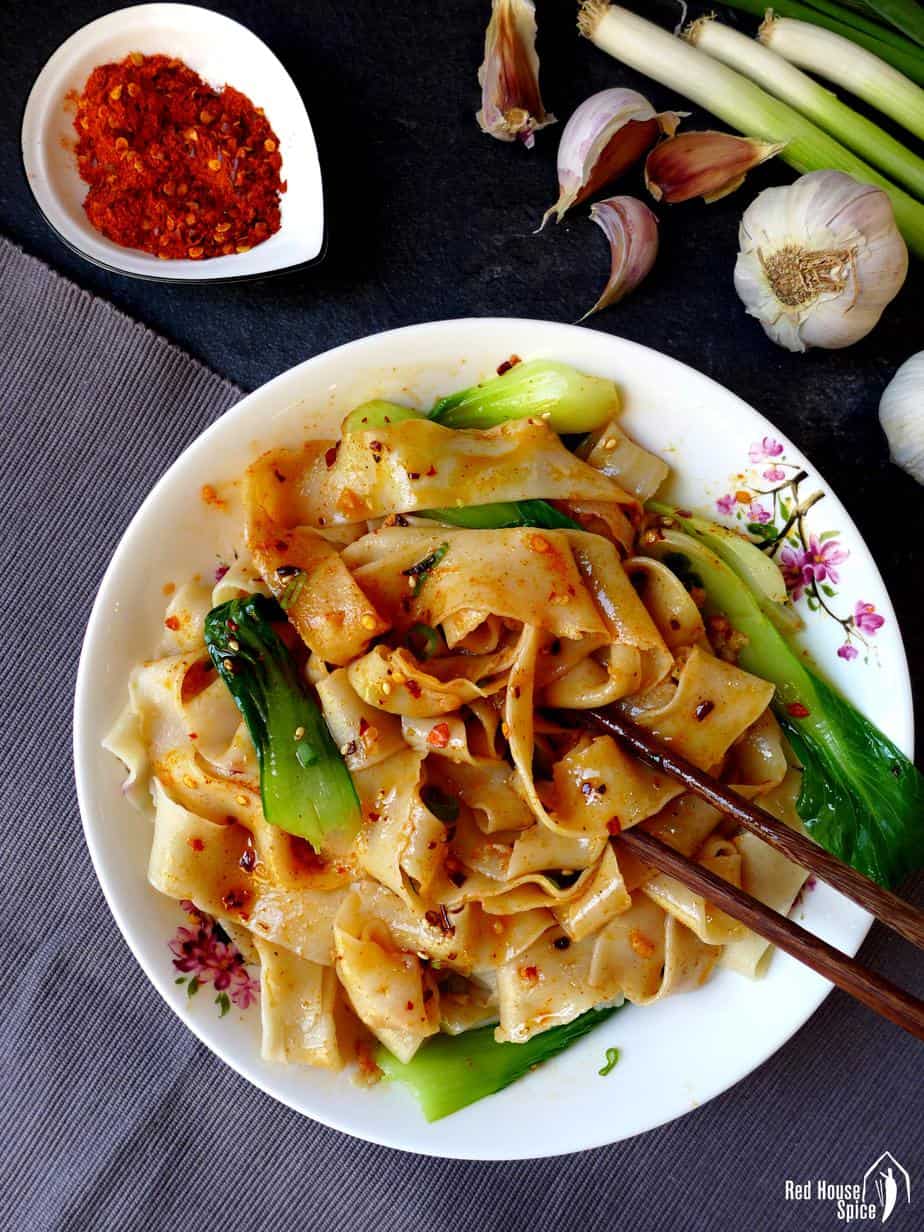
I had my parents over to our Red House in England last holiday season. I spent lots of time with them cooking in the kitchen as this is our favourite way to connect. Today I’m sharing my mum’s favourite childhood dish Biang Biang Noodles, a hand-pulled noodle dish originated from her home town, Xi’an.
“Biang” the most complex Chinese character
Biang Biang noodles refer to wheat flour noodles that are hand-pulled to a long, thick and broad shape (can be as wide as a belt). They have a chewy texture and are often served with a pungent, spicy dressing. Not only is this dish famous for its delectable taste and texture, it’s also renowned for the special character used in its name.

The character for “Biang” is considered to be the most complex Chinese character. Depending on the variation, it has between 42 to 71 stokes. It’s so complicated that even today this character can’t be written by a computer. The photo on the left is a Biang Biang noodle stall that I saw in Xi’an on my last Culinary Tour of China. See how complicated the first two characters are!
Choose the right flour
For Biang Biang noodles, I use British standard plain flour (all-purpose flour) with a protein content ranging between 10% and 11%. If your flour has a higher protein content (over 12%, eg. bread flour), I suggest you add a little cake flour. Otherwise, the dough might be too elastic, tending to easily return to its original form after pulling.
My recommended flour-water ratio is 2:1 in weight. After the first kneading, the dough needs to be medium-firm and it will get softer over time. The ratio may vary slightly depending on the brand. Adjust accordingly.
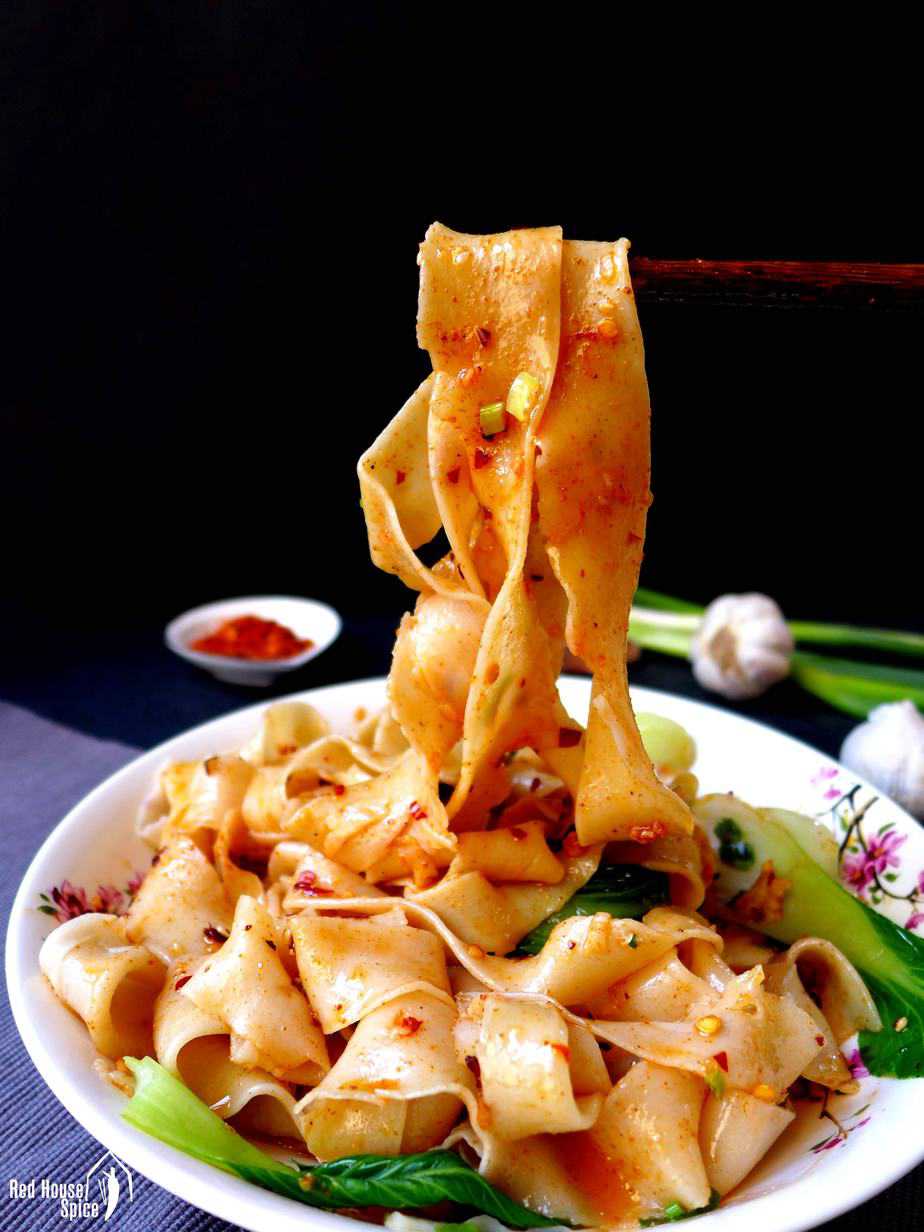
Allow time to rest the dough
You only need three basic ingredients to make the dough for Biang Biang noodles: flour, water and a little salt. However, another “intangible ingredient” plays an important role if you’d like a fail-proof experience. That is patience.
In other words, you need to allow the dough enough time to rest. I know the importance of this trick from watching my parents cooking long ago, but I didn’t know the reason why resting makes dough stretchy until I read a scientific article about the dough:
From the moment you bring a liquid ingredient (such as milk or water) in contact with wheat flour, the individual gluten proteins in the flour unravel and hook onto one another, creating strong bonds. With time, an elaborate network of interconnected gluten strings forms…… It is the gluten network that holds a dough together and gives it elasticity and the ability to stretch.
——The Scientific Secret of Stretchy Dough, SCIENTIFIC AMERICAN

Three stages of dough resting
Plan ahead and never rush. If you keep to this golden rule, you will find it so easy to make hand-pulled noodles. The resting process takes place in three stages:
- The first resting procedure applies to the situation where you knead the dough by hands. Roughly combine the ingredients to form a dough. Leave it to rest for 10- 15 minutes then knead it again. This will help you to achieve a very smooth dough without too much effort (If using a stand mixer, simply knead at a low speed for 5 minutes).
- After dividing the dough into small pieces and coating each piece with oil, leave them to rest for at least 1 hour.
- When ready, flatten the dough piece into a rectangle shape. Do not pull it straight away. Allow it a little time to rest again. By the time you’ve flattened other pieces, the first piece will be ready to be pulled.
How to pull the noodles
Pulling noodles with your hands may seem a little intimidating. In fact, it can be quite easy if you prepare and rest the dough properly. I have a separate blog post “Hand-pulled Noodles, a Foolproof Recipe” which demonstrates hand-pulling techniques with great tips and detailed instructions.
For making Biang Biang Noodles, I use the traditional method which has a slight twist. Here is how exactly I do it (Please refer to the video in this post):
- Press the flattened dough piece in the middle lengthways using a rolling pin or a chopstick.
- Hold each end of the dough and pull gently until it stretches to your preferred thickness.
- Put the noodle on a surface. Break it apart from the middle line to make a loop.
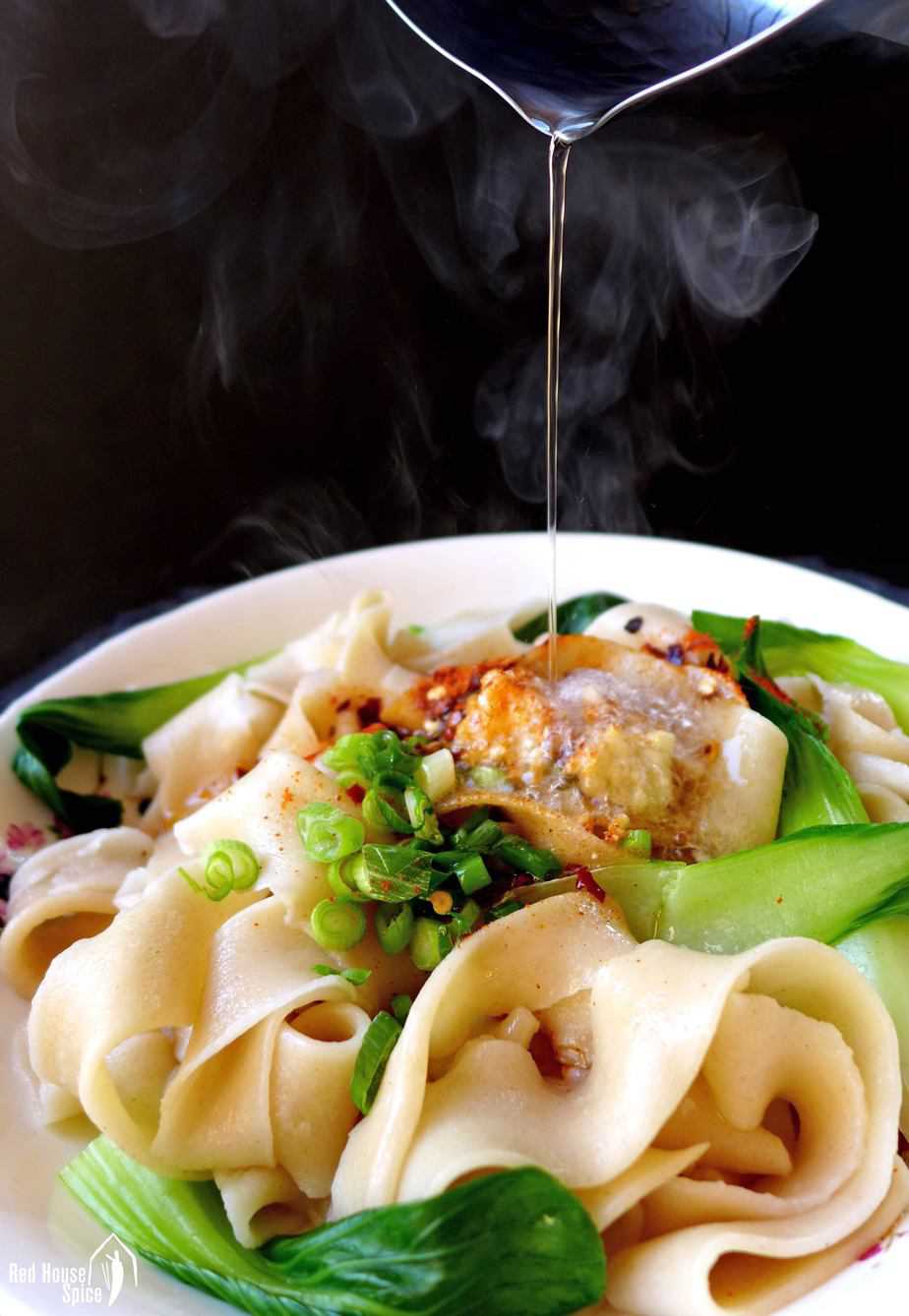
Make a pungent dressing
Biang Biang noodles are also called You Po Che Mian (油泼扯面) which literally means “Oil pouring over hand-pulled noodles”. This name explains a particular method of seasoning “You Po”: place chilli flakes, chilli powder, ground Sichuan pepper, minced garlic and scallions on top of the cooked noodles, then pour hot oil over.
The heat immediately releases the full flavour of all the herbs and spices. I love it when the pungent fragrance suffuses my kitchen. Simply irresistible!
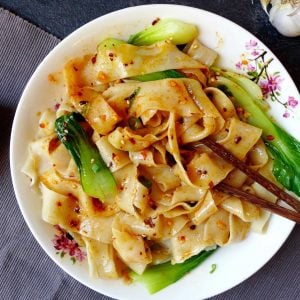
Xi’an Biang Biang noodles
Ingredients
For the noodles
- 250 g all-purpose flour - about 2 cups
- 125 ml water - ½ cup+2 teaspoon (see note 1)
- ¼ teaspoon salt
- cooking oil - for coating the dough
For the seasoning
- 3 tablespoon cooking oil
- 1 tablespoon scallions - finely chopped
- 2 teaspoon garlic - minced
- Chilli flakes - to taste
- Chilli powder - to taste
- ¼ teaspoon ground Sichuan pepper
- Salt - to taste
- 2 teaspoon light soy sauce
- 1 tablespoon black rice vinegar
You may also need
- 1 head bok choy - or other green leafy vegetables
Instructions
Prepare the dough
- Mix flour, water and salt by hand (or a stand mixer with a dough hook). Knead until well combined and very smooth (See note 2).
- Divide the dough into 8 equal pieces. Knead each one again and roll it into a gherkin shape.
- Thoroughly coat each dough piece with oil then place them on a plate (or in a container). Cover with cling film then leave to rest for 1 hour (See note 3).
Pull the noodles (please refer to the video in the post content above)
- Heat up a pot of water. While waiting, flatten each dough piece into a rectangle shape with a rolling pin.
- When the water begins to boil, start the process of noodle pulling.
- Press the dough in the middle lengthways using a rolling pin or a chopstick.
- Hold each end of the dough and pull gently until it stretches to your preferred thickness.
- Put the noodle on a surface. Break it apart from the middle line to make a loop.
Cook the noodles
- Put the noodle into the boiling water. Repeat the procedure to pull other noodles. Cook four noodles at a time (It takes about 1 minute to cook through) then place in a serving plate (bowl).
Season the noodles
- Place scallions, garlic, chilli flakes, chilli powder, Sichuan pepper and salt on top of the noodles.
- Heat up the oil. When it starts to smoke, pour it over the scallion, garlic, etc.
- Add soy sauce and vinegar. Stir to coat the noodles evenly.
Optional vegetable
- To make it healthier, you may blanch some green leafy vegetables, such as Pak Choy or spinach, and serve with the noodles.
NOTES
NUTRITION
NUTRITION DISCLOSURE: Nutritional information on this website is provided as a courtesy to readers. It should be considered estimates. Please use your own brand nutritional values or your preferred nutrition calculator to double check against our estimates.



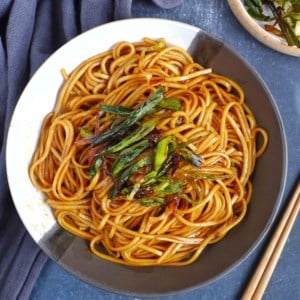


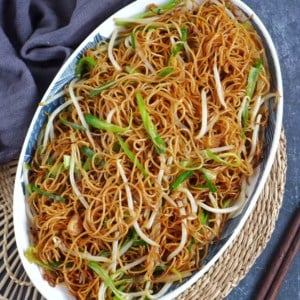
Hey,
What cooking oil is the best to use?
Thanks
Neutral-flavoured oil with a high smoking point, such as sunflower, canola, corn, soybean, rapeseed, vegetable oil, etc.
Can’t wait to try out this recipe! Is it possible to make the noodles a day before or will that ruin the quality?
I highly recommend you make it on the day. You can make the dough a day in advance though. Keep it well covered and bring it back to room temperature before pulling.
So good! Loved this!
Awesome 👌 👏
Perfect recipe! Tastes exactly like my favourite Biang Biang Noodles from my local Xi’an restaurant in London. Also really easy to make and very clear to follow. Thank you so much!!!! Will definitely be following your other recipes 😀
Great to hear you enjoyed the recipe! BTW, I like those few Xi’an restaurants in London too.
So simple and delicious. I had no idea how easy it was to make your own noodles – will be doing again!
No link to video …………
Hi Frankie! The video plays automatically on this page. Do you have an ad blocker on your browser? If that’s the case, you’ll have trouble seeing it. I’m planning to make another video and publish it on my YouTube channel. So it’ll be available in the near future.
What are some non-spicy toppings you suggest to try? I am a wimp when comes to spice 😂.
You can simply reduce or omit the chill in the recipe. Or, serve them with a stir-fry on top, e.g. Tomato and Egg Stir-fry, Black Pepper Chicken, etc.
I am so happy to have found this recipe! I tried Biang Biang Noodles for the first time a couple of months ago and have tried recreating it numerous times! I will follow this recipe next time!
I am excited to try the You Po Che Mian method and will be referring to this recipe and the Hand-pulled Noodle article for my next noodle making adventure!
Happy pulling Sarah!
Çok lezzetli.Teşekkürler